How to Fix HID Compliant Touch Screen Missing from Device Manager
The HID-compliant touch screen driver missing from Device Manager means the touch screen stops working. This happens because the driver is either not there or has been removed from the system. It usually occurs due to driver corruption or accidental deletion, often after a system update or conflict with other software.
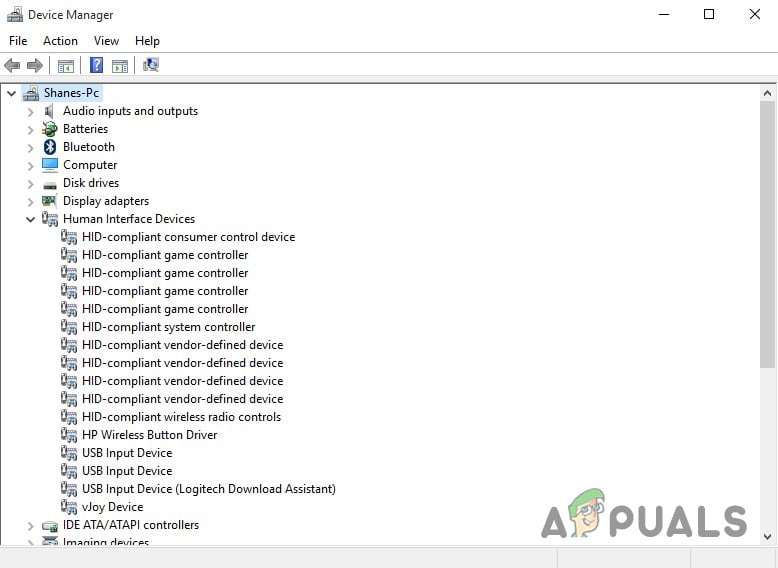
Sometimes, hardware problems or conflicts with other drivers can also cause this issue.
Before starting check if its a hardware or software issue.
Hardware or Software Issue:
To determine if the issue is hardware or software related, check if the touch screen works on the system’s BIOS screen. Boot or reboot the system and access the BIOS screen, usually by pressing F10 during boot. If the touch screen functions in the BIOS, the issue is likely software-related. If not, it suggests a hardware problem. Many manufacturers include touchscreen tests in their BIOS, such as the UEFI Hardware Diagnostics Menu. For example, HP users can download the HP PC Hardware Diagnostics Tool.
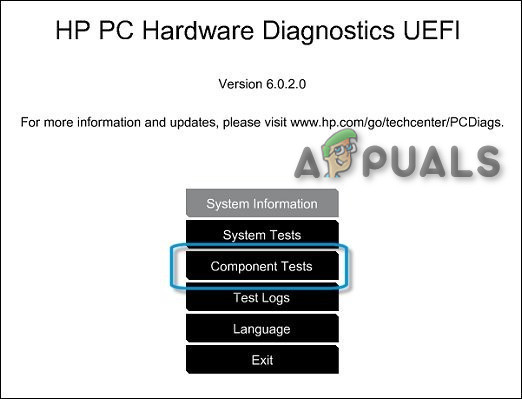
You can also use Windows 10 Bootable Media to test the touch screen. Insert the media and boot from it without installing Windows. If the touch screen does not work during the Windows installation setup, it is likely a hardware failure. In case of a hardware failure, seek a hardware repair service or continue using the system without touch features.
If the touch screen works, the issue is software-related, and you should follow the methods listed below to resolve it.
1. Show Hidden Devices in Device Manager
Sometimes, drivers in Device Manager are hidden instead of removed. Making them visible helps you update or troubleshoot any inactive or hidden drivers, like the HID-compliant touch screen, if they’re installed but not showing.
- Press Windows key + R to open the “Run” command box. Type “devmgmt.msc” and press “Enter” to open Device Manager.
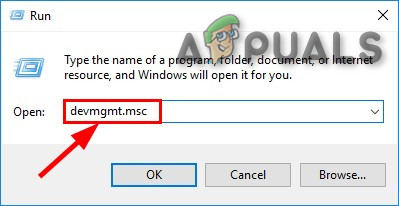
Run devmgmt.msc - In Device Manager, click View and select Show hidden devices.
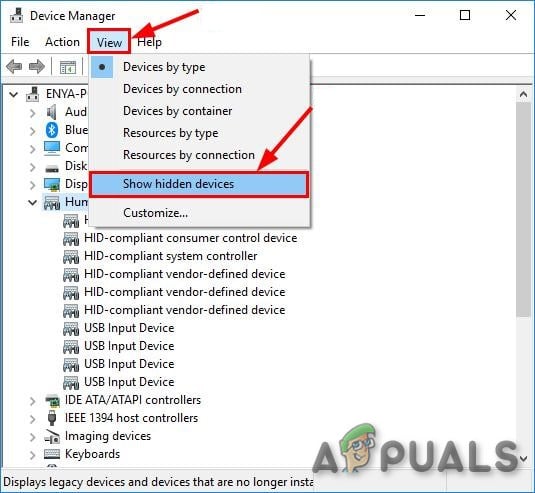
Show Hidden Devices - Click the Action menu and select Scan for hardware changes.
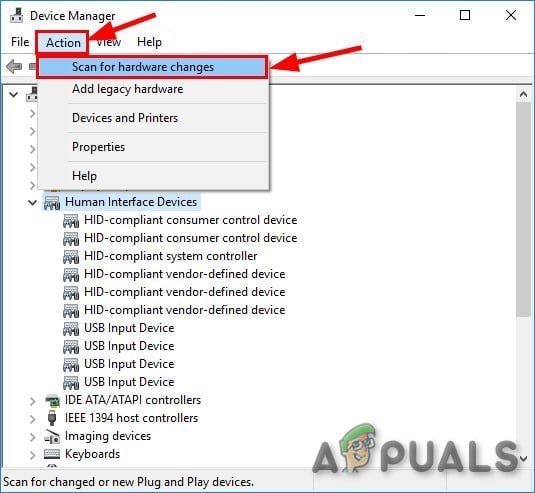
Scan For Hardware Changes - Check under Human Interface Devices for the HID-Compliant Touch Screen. Right-click to unhide it, then try using it again.
2. Run the Hardware and Devices Troubleshooter
The Hardware and Devices Troubleshooter can find and fix problems with drivers by checking for hardware conflicts or missing drivers. It can automatically detect if the HID-compliant touch screen driver is missing and try to reinstall or repair it, fixing the touch screen without you having to do it yourself.
2.1 For Windows 10
- Press the Windows key and type “troubleshoot”, then click on Troubleshoot.

Open Troubleshoot from Windows Search Box - Select Hardware and Devices and click Run the troubleshooter.

Click on Run the troubleshooter - Click Next and follow the on-screen instructions to fix any detected issues.
- Open Device Manager to see if the HID-Compliant Touch Screen is visible.
2.2 For Windows 8.1/7
- Press the Windows logo key and type troubleshoot, then select Troubleshooting.
- Click on Configure a device.

Configure a device in Troubleshooter - Click Next and follow the instructions to resolve any detected issues.
- Open Device Manager to check if the HID-Compliant Touch Screen is visible.
3. Uninstall & Reinstall the Touchscreen and Update Chipset Drivers
Refreshing the touchscreen driver and updating chipset drivers fixes possible problems with drivers. Uninstalling and reinstalling the touchscreen driver removes bad files that might hide the device. Updating chipset drivers helps the system work better with the touchscreen, bringing back its function.
3.1 Uninstall the Ghost Drivers
- Type “Command Prompt” in Windows Search, right-click the result, and choose “Run As Administrator”.
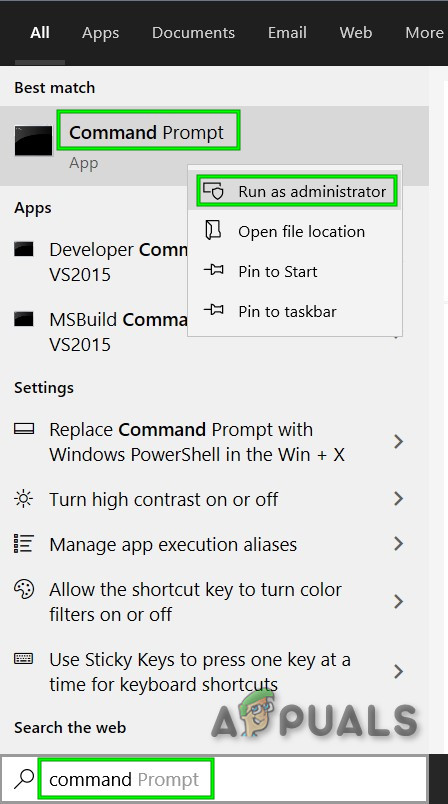
Open Command Prompt from Windows Search - In Command Prompt, type:
set devmgr_show_nonpresent_devices=1
and press Enter. This setting enables viewing hidden devices in Device Manager but produces no output.
- Type “devmgmt.msc” to open Device Manager and hit Enter.

Run set devmgr_show_nonpresent_devices=1 in Command Prompt - In Device Manager, click View and select Show Hidden Devices.
- This displays devices, drivers, and services that weren’t properly installed or uninstalled. Expand lists in Device Manager, and right-click to uninstall any offending device. Avoid removing unfamiliar devices.
- Restart the system after these actions.
3.2 Use Windows Updates for the Latest Driver Updates
3.2.1 For Windows 10
- Press the Windows button, type “Check for updates“, and click on the search result.

Check For Updates in Windows Search Box - In the window that opens, click “Check for updates“.
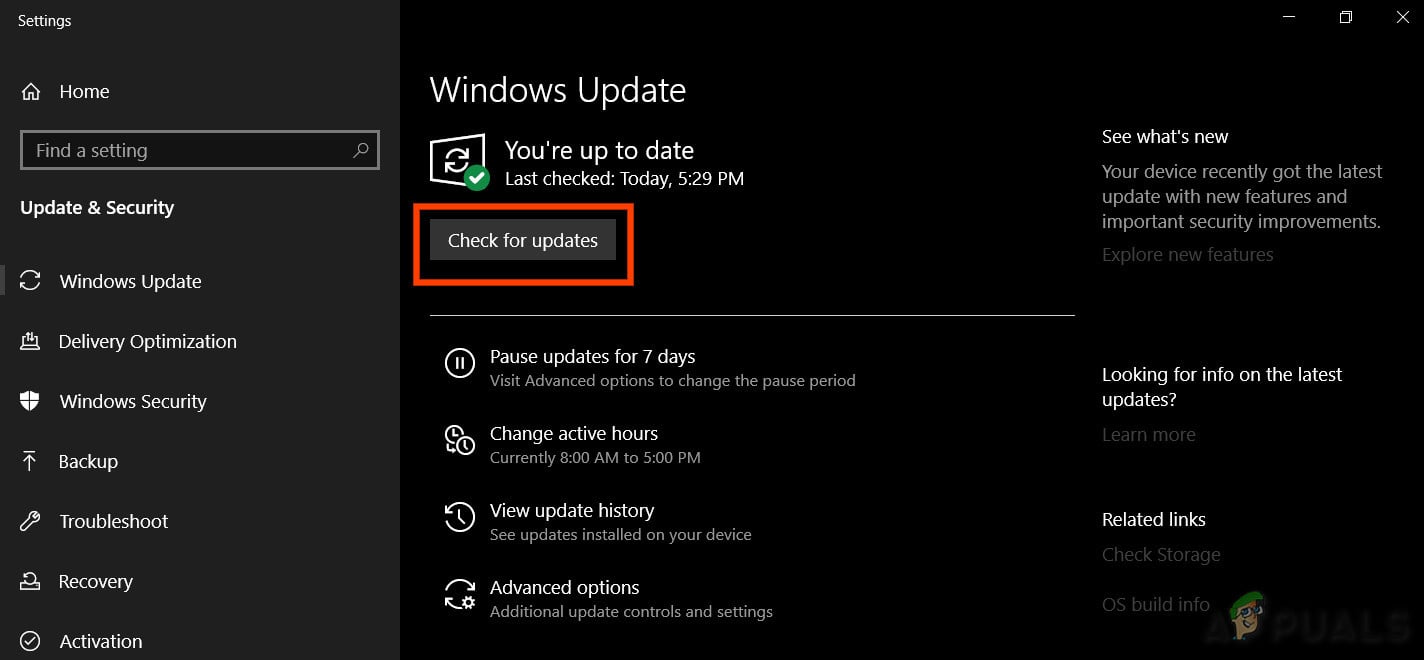
Check For Updates - If updates are available, install them.
3.2.2 For Windows 8
- Click the Windows icon, search for, and open Windows Update.
- Select Show updates.
- Click Important updates are available.

Windows Update in Windows 8 - Review the list of updates. Select updates from the Important and Optional sections, ensuring all device driver updates are included.
- Click Install.
3.3 Update Driver Software from the OEM’s Website:
If you know the driver’s details, visit the Update Catalog and search for it. This site also helps to find older drivers known to work with your touch screen.
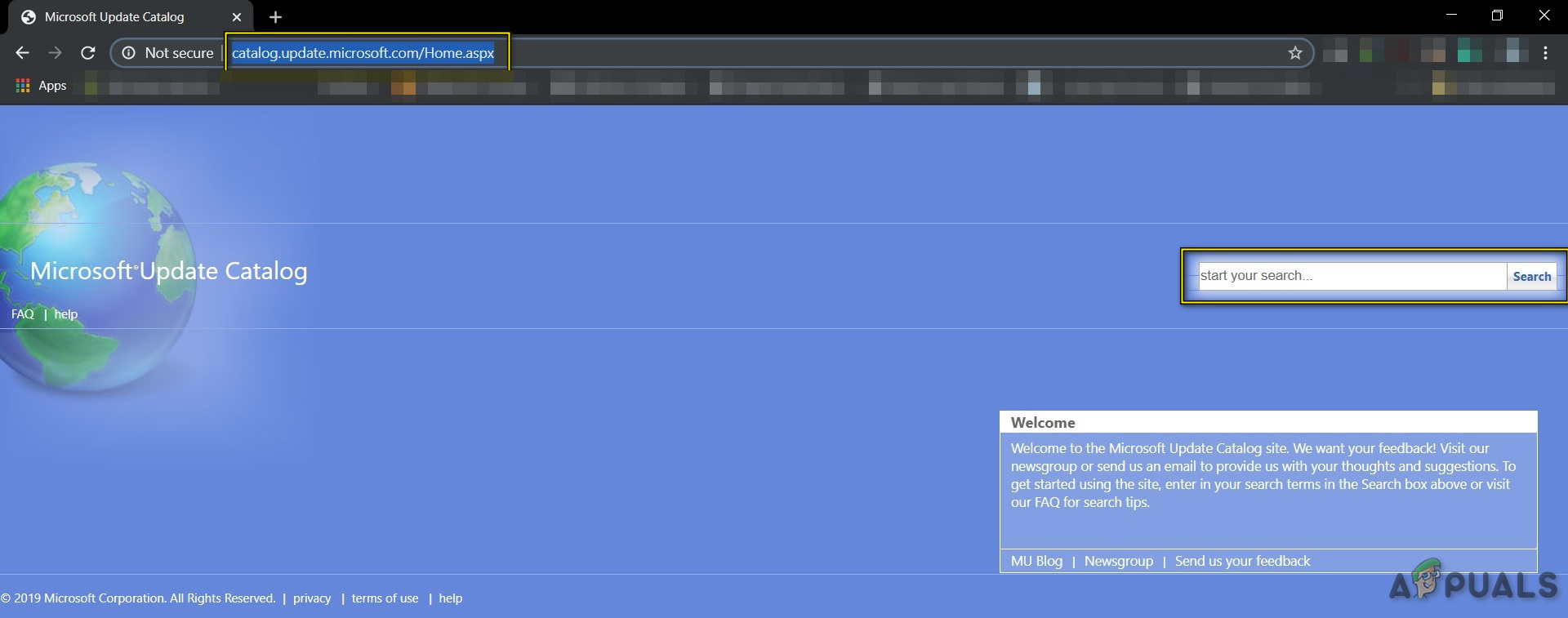
After updating drivers, check if the HID-Compliant Touch Screen is now visible in Device Manager. If not, continue to the next solution.
4. Uninstall Conflicting Windows Updates
Sometimes, Windows updates can accidentally cause device drivers to stop working or go missing. Removing recent updates that might conflict with the touchscreen driver can fix this and restore touch functions. This step undoes changes that might be preventing the driver from working properly.
- Press Windows+I to open Windows Settings.
- Click on Update & Security.
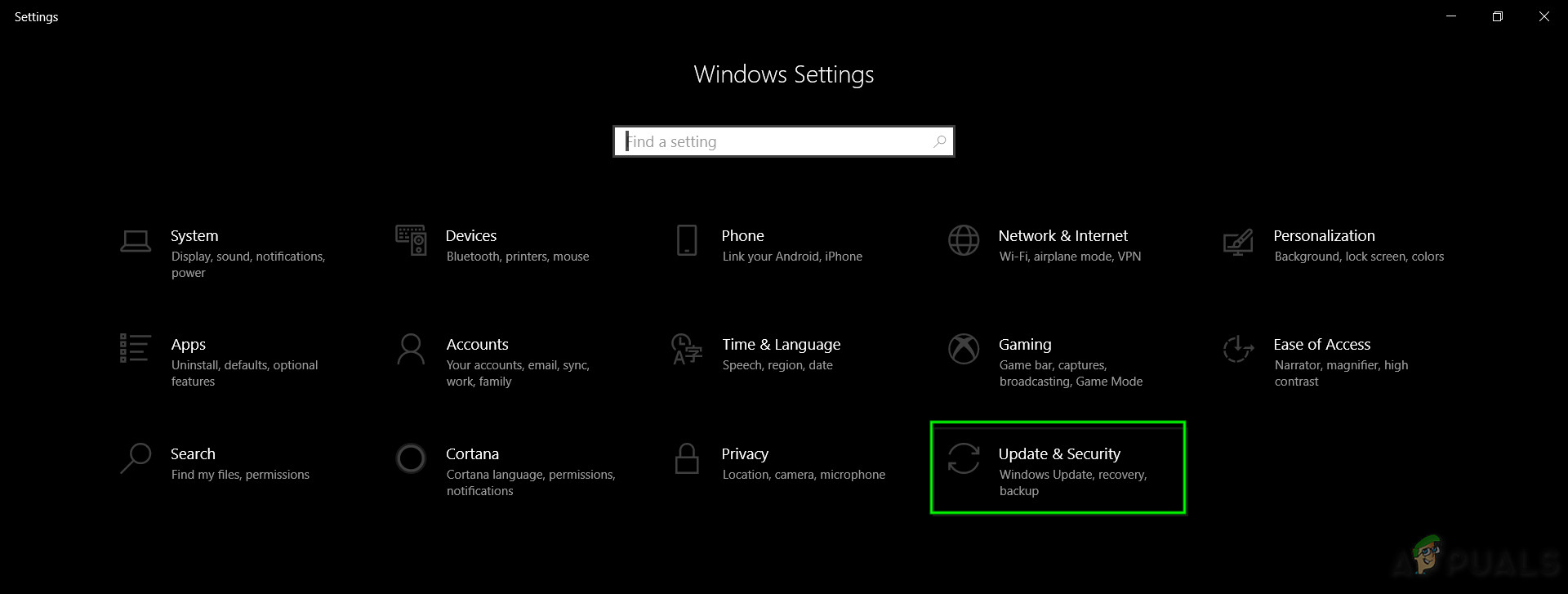
Update & Security in Windows Settings - Select Windows Update, then click “View Update History”.

View Update History - Click “Uninstall Updates”.
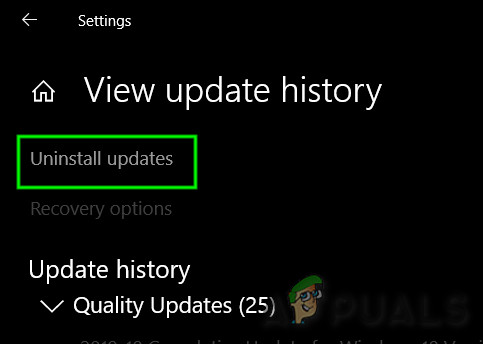
Uninstall Updates - Uninstall Update KB 4480116.
Update KB 4480116 might reinstall itself automatically if not blocked. To block it, follow these steps:
- Download the KB update (KB3073930) to block or hide Windows or driver updates.
- Launch it, click Next, and wait for detection of pending Windows Updates.
- Click the Hide Updates menu.
- Find update KB4480116, check the box, and click “Next” to confirm.
5. Configure the Touch Display
Manually setting up the touch display helps the system recognize the touch functions properly. Calibrating the touch display prompts the device to fix any settings, which can solve problems that made the touchscreen stop working. This step acts as a reset, aligning the system with what the touch hardware needs.
- Type and open “Calibrate the screen for pen and touch input” using Windows search.
- In the Display tab, click Setup.

Setup in Display Tab - Click Touch input.

Touch Input - Follow the on-screen instructions to identify your screen as a touch screen.
- Tap the screen to check touch response; if unresponsive, proceed to the next step.
6. Perform a Microsoft System Restore
Using Microsoft System Restore to return your system to an earlier time can fix missing touchscreen drivers. This process undoes recent changes, like bad updates, by going back to when the driver worked well. It’s an easy way to restore stable settings without affecting personal files, helping your touchscreen work again.
- Press Windows key + R to open Run, type “rstrui”, and press Enter to open System Restore wizard.

Opening the System Restore wizard via Run box - At the initial System Restore screen, press Next.

Using System Restore - Check Show more restore points. Select a restore point with an older date than the error, then click Next.
- Click Finish to start. Your computer will restart, applying the older state at next startup.

Starting the System Restore process
7. Change the Related Registry Value
Adjusting the registry settings for the HID touch driver can help the system detect the touchscreen again in Device Manager. This works because the registry controls how the system communicates with hardware. Fixing or updating these settings can make Windows recognize the touchscreen correctly.
- Open Windows Search and type “regedit”.
- Find regedit, right-click it, and choose “Run as administrator”.

Run Registry Editor as Administrator - Go to:
HKEY_CURRENT_USER\Software\Microsoft\Wisp\Touch
- Set the “TouchGate” value to ‘1‘.
- Exit the registry editor and restart your system.
8. Repair Windows
System problems can make important drivers, like the HID-compliant touch screen driver, disappear. Fixing these file errors helps restore missing drivers, which often solves touchscreen issues.
- Ensure the PC is off.
- Press the power button. When the Windows logo appears, hold the button to shut it down.
- Repeat three times.
- The Automatic Repair screen appears.
- Wait while Windows diagnoses your PC.

Diagnosing Your PC - When “Startup Repair” can’t repair your PC, click Advanced options.

Automatic Repair - Select Troubleshoot in Windows Recovery Environment.
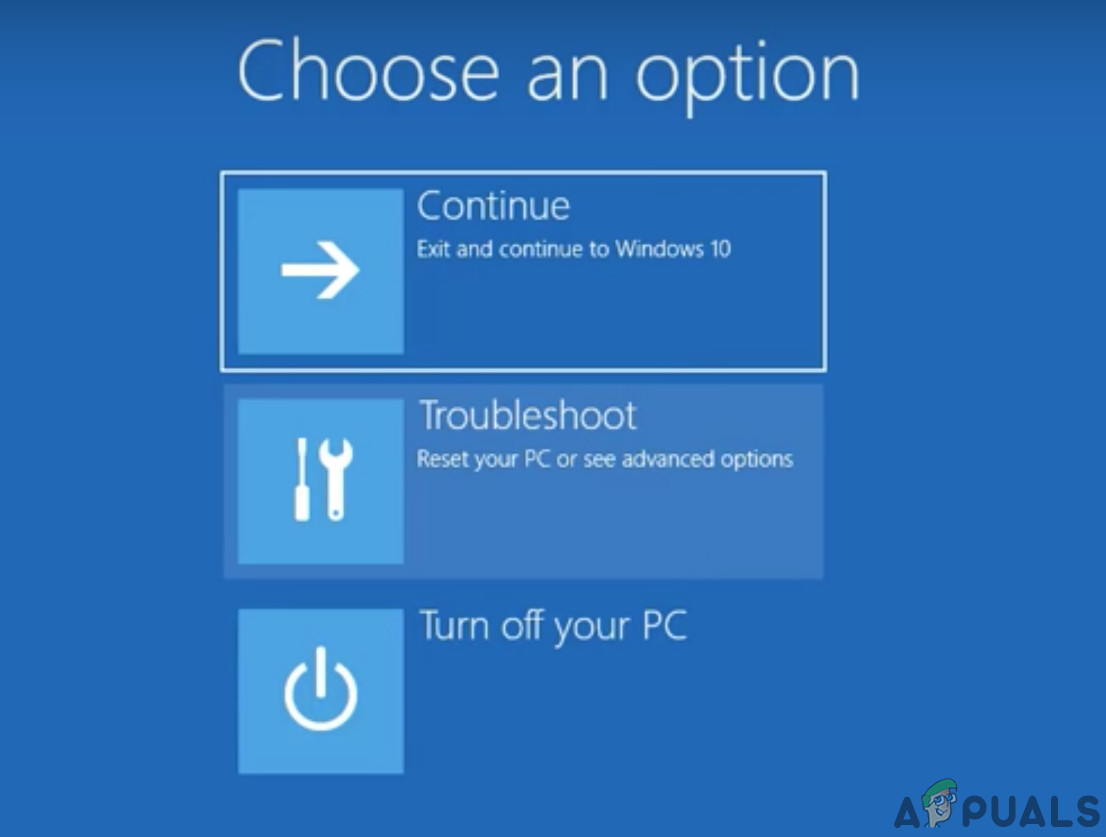
Troubleshoot in Windows RE - Click Reset this PC.

Reset This PC - Choose to keep or delete files and apps.

Keep or Remove Files in Reset PC - Click “Reset” to continue.
9. Update BIOS
Outdated BIOS firmware can cause hardware problems, like the touch screen driver disappearing. Updating the BIOS helps the system recognize and communicate with hardware better, which can fix missing drivers like the HID-compliant touch screen.
For BIOS updates, refer to these articles:
Warning: Proceed at your own risk as interrupting or failing to update the BIOS can render your computer non-functional.




